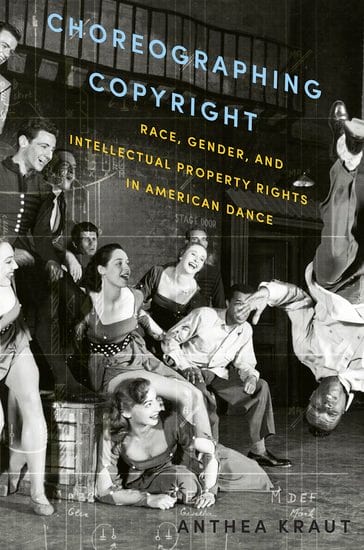 | Choreographing copyright
Anthea KRAUT
race, gender and intellectual property rights in American dance
Livre - BrochéOxford University Press
 9780199360376 9780199360376
336 pages
| | 53.50 € | Habituellement expédié sous
2-3 jours | • 30 jours pour changer d'avis ! | • Avis clients | |   |
|
Choreographing Copyrightprovides a historical and cultural analysis of U.S.-based dance-makers' investment in intellectual property rights. Although federal copyright law in the U.S. did not recognize choreography as a protectable class prior to the 1976 Copyright Act, efforts to win copyright protection for dance began eight decades earlier. In a series of case studies stretching from the late nineteenth century to the early twenty-first, the book reconstructs those efforts and teases out their raced and gendered politics. Rather than chart a narrative of progress, the book shows how dancers working in a range of genres have embraced intellectual property rights as a means to both consolidate and contest racial and gendered power.
A number of the artists featured in Choreographing Copyright are well-known white figures in the history of American dance, including modern dancers Loie Fuller, Hanya Holm, and Martha Graham, and ballet artists Agnes de Mille and George Balanchine. But the book also uncovers a host of marginalized figures - from the South Asian dancer Mohammed Ismail, to the African American pantomimist Johnny Hudgins, to the African American blues singer Alberta Hunter, to the white burlesque dancer Faith Dane - who were equally interested in positioning themselves as subjects rather than objects of property, as possessive individuals rather than exchangeable commodities. Choreographic copyright, the book argues, has been a site for the reinforcement of gendered white privilege as well as for challenges to it.
Drawing on critical race and feminist theories and on cultural studies of copyright, Choreographing Copyright offers fresh insight into such issues as: the raced and gendered hierarchies that govern the theatrical marketplace, white women's historically contingent relationship to property rights, legacies of ownership of black bodies and appropriation of non-white labor, and the tension between dance's ephemerality and its reproducibility.
|
  | | | 100% Musique, 100% Cadeau !   
| |



